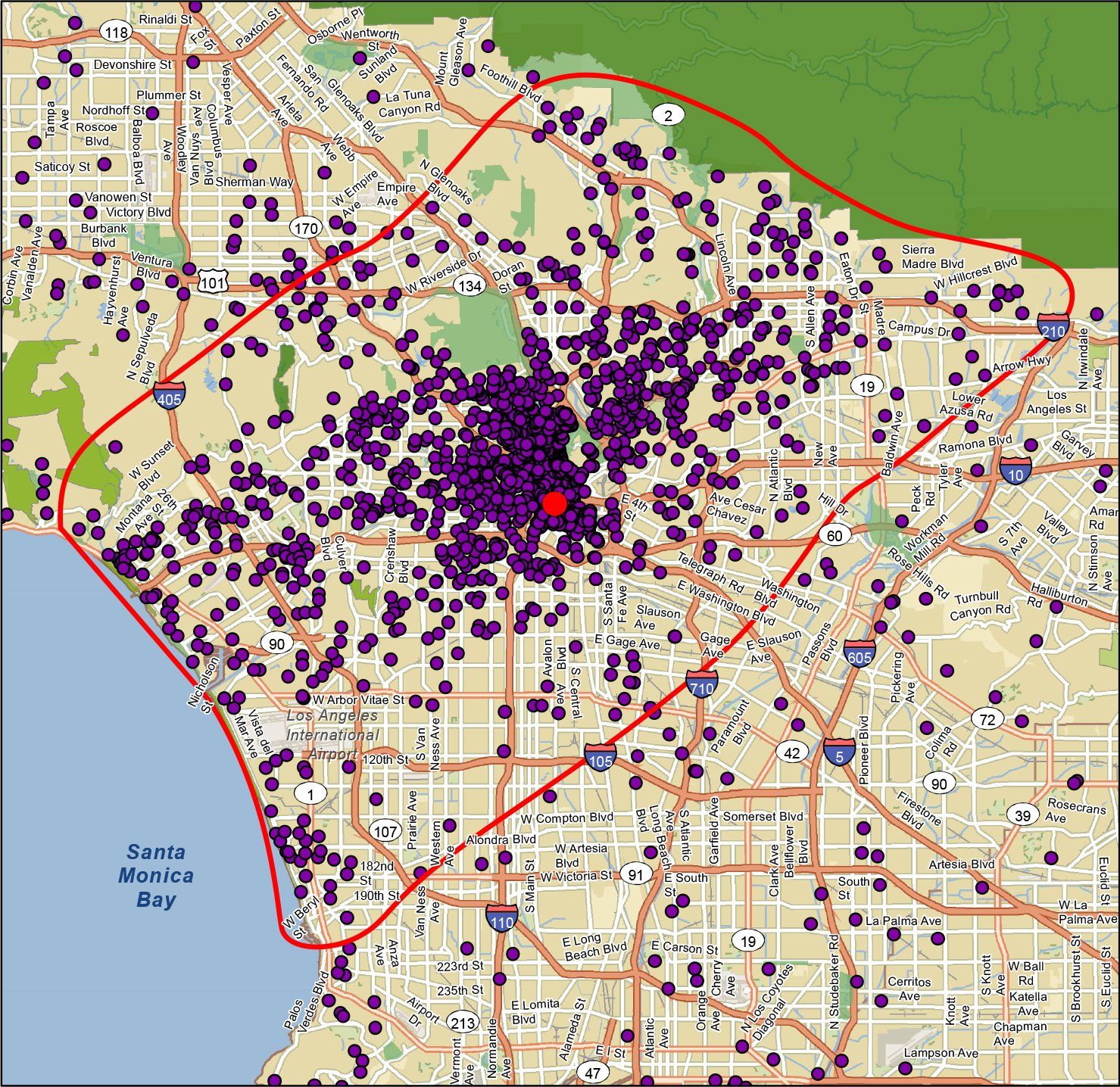Fish Where the Fish Are: The Importance of Understanding Where Potential Prospects Live
BY:
Jason Routman
March 2, 2021
When I am pulling a prospect list for a client, there are two important questions I always ask: Who are we trying to target, and what’s the geography that you’re trying to hit? Unfortunately, most of my clients don’t have a solid answer for either question. Of course, there are other factors to consider when doing a direct mail campaign, but for this posting, I want to focus on the importance of understanding where potential prospects live in relation to your business.
For most businesses, if we were to plot their clients on a map to understand their business reach, we’d find that roughly 80-90% of them live within a reasonable distance from the business location. The distance of how far a client is willing to drive is determined by what type of business you are, for instance, for an independent fast food restaurant, the average customer may come from 3-5 miles away. However, for a health club, the distance could be higher, up 20 miles or more. Other factors that will affect your reach are the product offering, the proximity of competition, road networks, geographic boundaries, and many others.

Let’s use the health club as an example. A health club is a membership organization, that requires a monthly household expenditure in order to operate. They’re usually centered in neighborhoods and can have a draw of up to 20 miles in more rural areas, and down to 1-2 miles in a more urban setting. The typical suburban health club, depending on price and product, usually find themselves pulling memberships from between 5 and 12 miles. When speaking with the business owner at a health club, they usually have an idea of their business reach based on their membership data, and this thought process is generally what drives the thinking behind where to target.
At MAR (MarketAreaReports.com) we take that idea and refine it. While you could make a case the business owner is “fishing in the right spot”, we encourage our clients to dig deeper into the geography. There are really only two ways that the average business owner thinks to establish their geography for targeting: Current client zip code penetration or the radius reach of their current customers. The problem we find with those two approaches when pulling a mailing list is that there tends to be a lot of households purchased in the mailing list that have a very low likelihood of visiting the business location. We say low likelihood because they either live in a neighborhood that’s on the fringes of the businesses reach, or they live in a neighborhood whose household demographics don’t match the profile of their current clients – think of a lower income neighborhood that’s close to an exclusive country club. At MAR, we solve this problem by focusing on the neighborhoods. We do this by using the proprietary models that we’ve developed to rank the attractiveness of a neighborhood and then report this back to the customer so that we can work together to target the best areas. The models that we have created look at things like client penetration in a neighborhood, distance from the location, neighborhood demographics such as income, home ownership and others (we don’t want to talk too much about the secret sauce). We call this fishing where the fish are.
So once we’ve taken your list and established client data inputs like neighborhood penetration and distance, we’ll bring in the other neighborhood demographic variables to rank the neighborhood’s attractiveness. We then provide a count report based on attractiveness and other household demographics (to be discussed in another post). The count report is a MAR client deliverable that includes neighborhood penetration maps, along with a count matrix, so our clients can decide exactly who and where to target.
At MAR, we can create a count report for any business that has collected client data. If you don’t have client data, we can still collaborate to best determine which neighborhoods are best for targeting, we just won’t have the client data inputs. At MAR, we firmly believe that using client data to establish where to target is the only way to increase ROI on a direct mail campaign or other marketing push. You may not lower the spend, but you’ll definitely see a better response.
Ready?
Call MAR today to discuss how we can help you establish a better way of defining the geography for your next direct mail project.

Jason Routman
Market Area Reports
Jason was born in the Chicago Suburbs, and moved to Tampa when he was 10 years old. After receiving his Marketing degree from the University of South Florida, he elected to stay in Tampa and work for a local Market Research firm for 8 years where was made the Manager of Analytics. In 2008 he married the love of his life Wendy, with whom he has two wonderful children. Jason is the lead Partner at Market Area Reports, and he is the thought leader behind the modeling and reporting contained in MAR’s products. When he’s not working he enjoys reading, swimming with his kids, and doing backyard astronomy.









